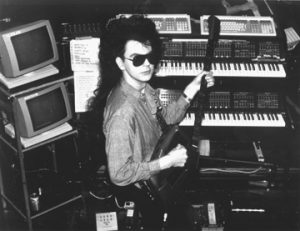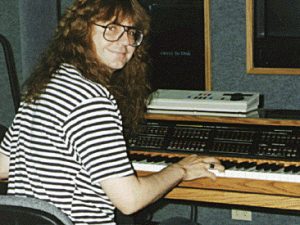For his follow up to Thriller, Jackson looked to leverage the expanding world of synthesizer technology. Thus, moving away from the Moog synthesizers used on Thriller, Jackson reached out to synthesizer expert Chris Currell for Synclavier lessons (Knopper, 158).

According to Currell himself, the musician’s technological ineptitudes, as well as Currell’s own prowess on the synthesizer, prompted Jackson to quickly assimilate Currell into his creative team. Working within Michael’s own home, Currell ran twelve-hour shifts, six days a week with Jackson’s “B-Team” creating demos for Bad, before it was brought to in front of the “A-Team,” or lead producer Quincy Jones and Bruce Swedien (Currell, Part 1). Jackson tasked Currell with creating “unusual sounds,” after which he would record onto cassette tapes and give to Jackson at the end of each day. With these cassette tapes, Jackson would spend late nights laying down vocals over them, allowing him to take hold of the entire music creating process from the comforts of his own bedroom (Knopper, 158). Jackson would come back the next day with various ideas to implement, whether it be specific baselines, or grooves, often giving Currell the instructions, “make me a sound that makes me do this…” with an accompanied dance move (Currell, Part 1).

Throughout this laborious process, Jackson and his B-Team, led by Currell, would come to create demos for “Smooth Criminal,” “Speed Demon,” “I Can’t Stop Loving You,” “Liberian Girl,” “The Way You Make Me Feel,” “Leave Me Alone,” and what would become the title track “Bad” (Knopper, 159). All of these songs eventually ended up on the A-Team’s sound boards, as Quincy Jones and Bruce Swedien transformed them into the pop album Bad is today. Thus, the uniqueness of the Synclavier allowed Jackson to take complete control over the early stages of Bad, ultimately providing him a platform to experiment in ways previously unattainable.
In terms of his tracks, Bad ultimately took sounds from Thriller to a new level. Each song in Bad begins with a very synthesized-like sound, typically with a very prominent synthesizer drum beat or piano. The drumbeat appears to be more pronounced in Bad due to its louder dynamics that surround Jackson’s vocals. Whereas in Thriller, there were still organic instrumental sounds, Bad sounds more electronic and computer-generated, thus reflecting the capabilities of the Synclavier compared to the Moog.
